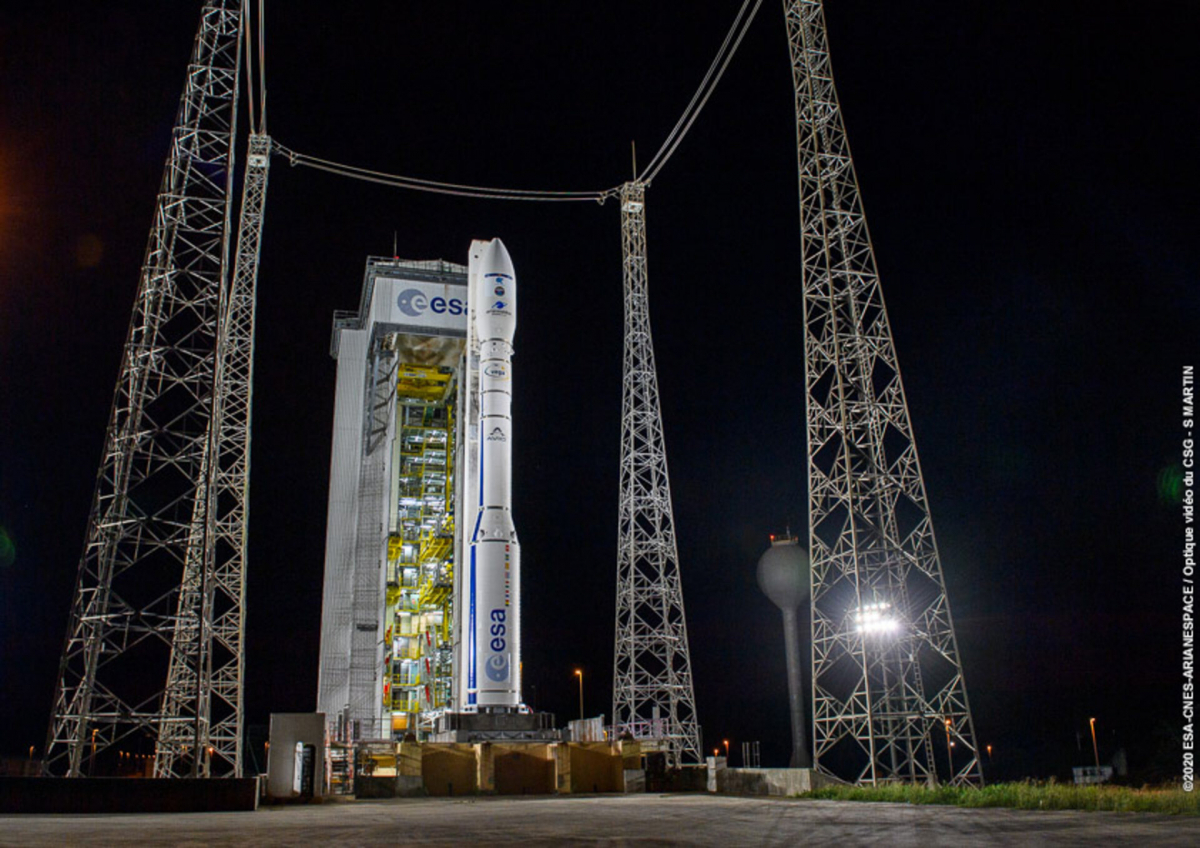The European light launcher, launched from French Guiana during the night of 16 to 16 November, suffered damage to its fourth stage, which was fatal to the mission.
Seventeen months after the failure of VV15
The seventeenth flight of the European Vega light launcher, launched from the Guyana Space Centre, began on 17 November at 01.52 UTC.
Eight minutes later, immediately after the first ignition of the Avum fourth-stage engine, a "degradation of the trajectory" was observed, leading to the loss of the mission.
Telemetry data are now being analysed by teams from Arianespace, Avio, Cnes and the European Space Agency in an attempt to identify the reasons for the launcher's dramatic failure.
Annus horribilis
On 11 July 2019, it was the second stage of the launcher that caused the failure of flight VV15, which carried the Emirates' Falcon Eye 1 optical reconnaissance satellite.
Vega's return to flight, delayed by the health crisis and poor weather conditions in French Guiana, took place on 3 September. It enabled a flight demonstration of the SSMS multiple launch system, carrying 53 small payloads.
This morning's failure is the ninth recorded this year, all powers combined: the first since 1982, with eight missions failed.
Two payloads on board
Vega flight VV17 was to place two satellites in sun-synchronous orbit at an altitude of 670 km.
The first passenger, Seosat-Ingenio (830 kg at liftoff), was to be the first Spanish optical (dual) Earth observation satellite.
Proposed in the Spanish Strategic Space Plan 2007-2011, it was built under the prime contractor ship of Airbus Defence and Space, with Thales Alenia Space in Spain providing the electronics for the optical instrument and communication subsystems.
The second passenger, Taranis (200 kg), was an observatory for Transient Light Phenomena (TLE) and terrestrial gamma-ray flashes located in the upper atmosphere (up to 100 km above sea level).
Its development, under the project management of the Cnes, had lasted about ten years.

